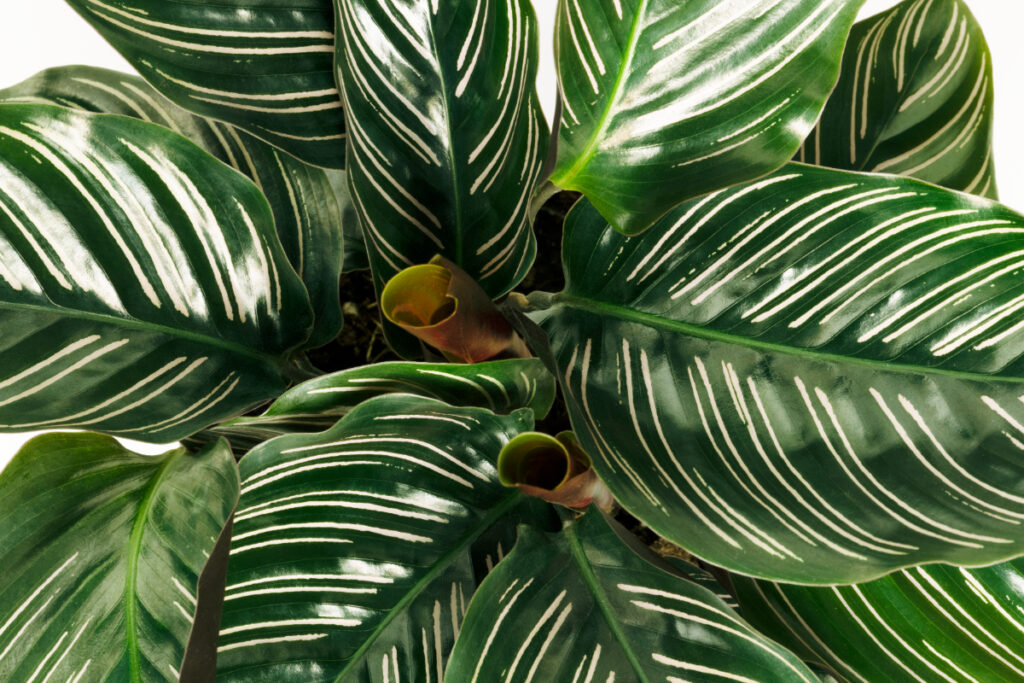Calathea, also known as the prayer plant, are characterised by oblong-shaped foliage that come in a variety of patterns and colors. There are around 60 species. Native to the South Americas, these plants have a tendency to be a bit fussy indoors, hence their reputation as the “drama queens” of the plant community. Calatheas grow at a moderately fast rate, but do not spread out over the pots. When grown indoors, they reach a maximum average of two feet in height. Blooming only occurs in certain species, such as the Eternal Flame Plant (Calathea crocata), which produces beautiful orange flowers. Calatheas are a genus under the Marantaceae family, and they are often mistaken for the Maranta due to several similar properties. Their most notable shared trait is known as nyctinasty- their leaves lay flat during the daytime, then fold up slightly during nighttime or lower light situations. The leaves follow the morning sun in order to maximise light absorption. This is made possible by the pulvinus, a small joint between the stem and the leaf that facilitates growth and independent movement. You needn’t worry about keeping Calatheas in households with pets, as they are safe for both animals and humans.
Calathea do best in medium to bright indirect sunlight, but will tolerate lower light conditions. Their natural habitat is the floors of jungles and forests, receiving light that filters through the tops of trees.
Water with distilled or rain water when the top 25% of the soil is dry. Moisture is key to helping your Calathea survive.
They do best in humid environments, preferably between 50%-65% humidity, with temperature between 65-85 Fahrenheit. Calatheas are adverse to the cold, any temperature outside of this range can cause harm.
Calathea can be a bit tricky to propagate. The best way to propagate is through division of pups, but they don’t like being disturbed unnecessarily. Dividing during a necessary repotting is the best way to minimize disturbance. Be very careful when dividing them at the roots, as any breakage will increase the chance of shock to the plant. Allow the pups to develop with the mother plant for best results.
Your Calathea could be not praying for many reasons. If it is getting too much sun, or not enough sun it is less likely to pray. Too much water, or alternatively too dry of soil, can also hinder nyctinasty. The key to thriving Calatheas is the right balance of everything
